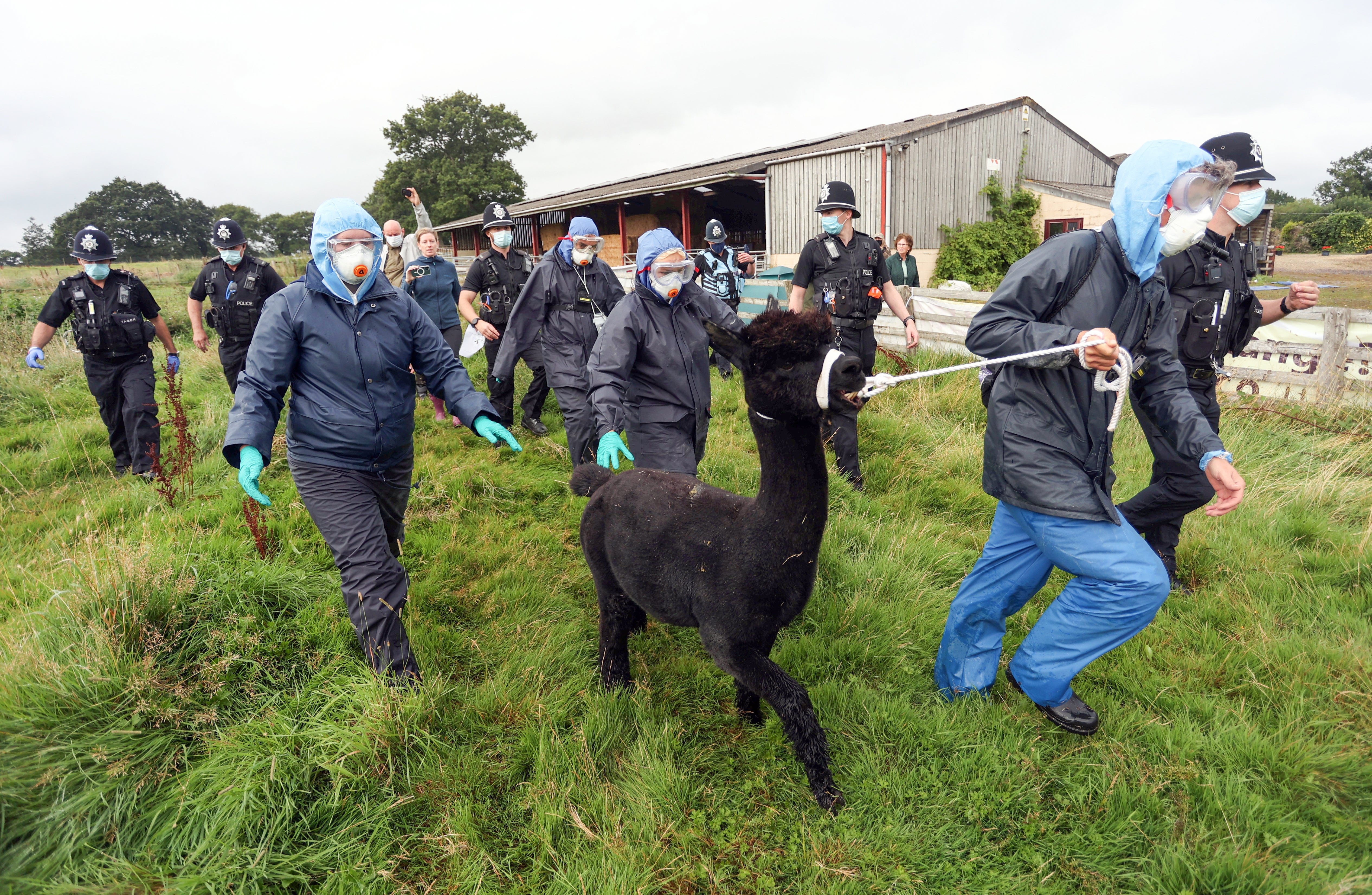Geronimo: Government refuses to say how alpaca was killed
Owner ‘left distraught’ by secrecy over method used

Government officials have refused to reveal the methods used to kill Geronimo the alpaca.
And the Royal College of Veterinary Surgeons may be forced to investigate complaints against Christine Middlemiss, the chief veterinary officer (CVO), about the decision to put down the animal and how he was handled as he was led to his death.
Owner Helen Macdonald and animal welfare experts have repeatedly accused the government of maintaining a cover-up by not telling her how officials put Geronimo down.
Officials supported by police euthanised Geronimo five weeks ago, despite the presence of protesters who backed his owner in saying the positive tuberculosis results were based on flawed tests.
Ms Macdonald and supporters claim officials handled the alpaca poorly and failed to use the correct head halter to lead him away, causing him “great distress” in his final hours.
She said she has been left distraught by this and by not being told what euthanasia method was used.
In response to a Freedom of Information request by The Independent asking exactly how Geronimo died, workers at the Animal and Plant Health Agency (APHA) said he was euthanised but said they could not disclose more information for data-protection reasons.
The APHA says it will release the post-mortem examination results to Ms Macdonald after cultures have been done, which may take several months.
“Geronimo was moved from the farm by Animal and Plant Health Agency officers and taken to an Animal and Plant Health Agency facility to be euthanised,” the response read.
“The officers who handled the alpaca are highly experienced with camelids and have dealt with them for a significant number of years, having a detailed working knowledge of gathering, handling and TB testing in camelids.”
Geronimo tested negative for bovine TB before being imported in 2017 from New Zealand. He showed no symptoms after that, but the Department for Environment, Food and Rural Affairs (Defra) insisted subsequent tests on him had proved positive so he should be culled.
Animal lovers furiously claimed that the APHA officials were cruel to use a rope rather than a correct head harness.
Asked about any advice the chief veterinary officer had given in advance on the methods used to lead Geronimo from his field, APHA replied that it could find no recorded information on advice provided by the CVO for use of a head harness and “therefore this information is not held”.
Ms Macdonald and supporters have lodged a complaint with the Royal College of Veterinary Surgeons asking for an investigation into Ms Middlemiss’s conduct.
A spokesperson for the college said: “We are unable to say whether any concerns have been raised with us about individual veterinary professionals unless and until they are referred to a full public hearing of the disciplinary committee. This is to ensure fairness for all involved parties.”
A decision on a referral would normally be within four months.
Ms Middlemiss has previously said TB-like lesions found on Geronimo’s body were undergoing further investigation, adding: “These tests include the developing of bacteriological cultures from tissue samples which usually takes several months.”
A Defra spokesperson said Geronimo’s removal was carefully planned with full consideration of his welfare, and that Ms Middlemiss had a wealth of experience and knowledge in the veterinary sector and was eminently qualified for the role.
Geronimo was transported under veterinary supervision, Defra says, and that vets were present at the loading and the unloading, as well as travelling behind the trailer during its journey.
“The fit of the halter was assessed several times to ensure there was no restriction to Geronimo’s breathing and therefore it was decided that it was the most appropriate for the situation,” the spokesperson added.
Join our commenting forum
Join thought-provoking conversations, follow other Independent readers and see their replies
Comments


Bookmark popover
Removed from bookmarks